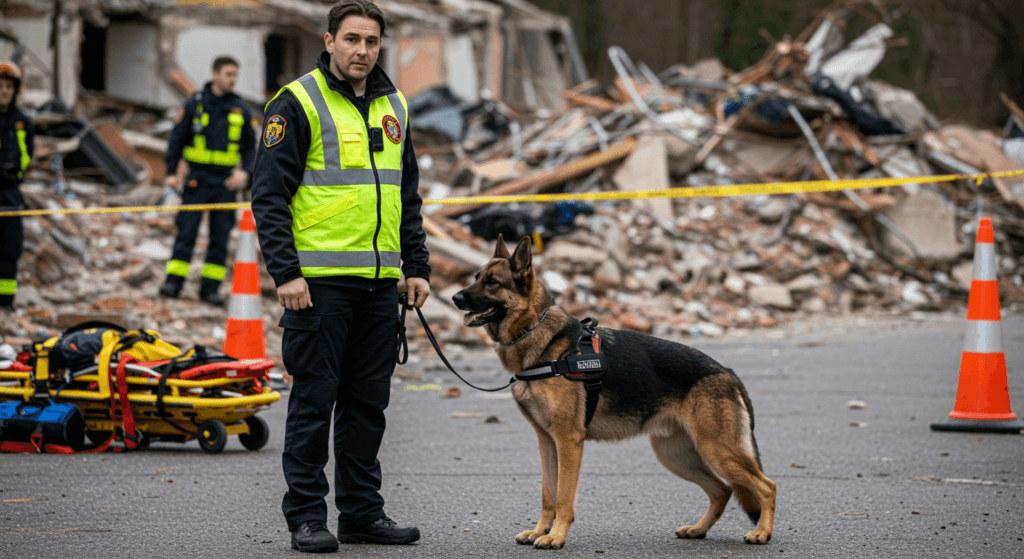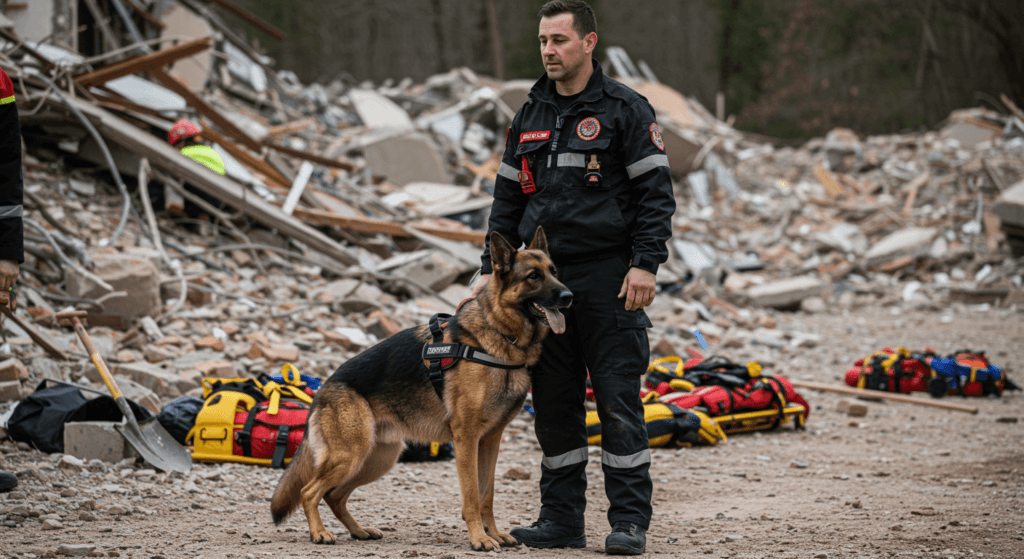Table of Contents
Explore the legacy, training, and roles of German Shepherd Working Dogs—versatile heroes in police, military, and rescue operations.
German Shepherd Working Dogs have long been celebrated as one of the most versatile and intelligent breeds in the canine world. From their origins as herders in 19th-century Germany to their modern-day roles in police forces, search-and-rescue missions, and military operations, these dogs exemplify loyalty, adaptability, and unmatched skill. This comprehensive guide delves into every facet of German Shepherd Working Dogs, exploring their history, capabilities, training protocols, health considerations, and enduring legacy.
The History of German Shepherd Working Dogs
The story of German Shepherd Working Dogs begins with Captain Max von Stephanitz, a visionary breeder who sought to create the ultimate working dog in the late 1800s. By selectively breeding herding dogs from rural Germany, von Stephanitz emphasized traits like intelligence, physical stamina, and trainability. His efforts birthed the Deutsche Schäferhund (German Shepherd Dog), a breed designed not just for herding sheep but for excelling in diverse tasks.

During World War I, German Shepherd Working Dogs gained international recognition for their roles as messengers, sentries, and ambulance dogs. Their ability to navigate trenches and detect explosives saved countless lives, cementing their reputation as indispensable military companions. Post-war, their skills transitioned seamlessly into civilian roles, including police work and disability assistance. Today, organizations like the American Kennel Club (AKC) recognize them as a top choice for demanding jobs.
Key Characteristics of German Shepherd Working Dogs
Physical Traits
German Shepherd Working Dogs are built for endurance and agility. Males stand 24–26 inches tall, while females average 22–24 inches. Their double coat—medium or long-haired—provides insulation in harsh conditions, and their powerful hind legs enable sprinting speeds of up to 30 mph. Notably, their erect ears and keen senses make them exceptional at detecting subtle environmental changes.
Intelligence and Temperament
Ranked as the third-smartest dog breed by Stanley Coren’s The Intelligence of Dogs, German Shepherd Working Dogs thrive on mental stimulation. Their eagerness to learn and problem-solving prowess make them ideal for complex tasks. However, their protective instincts require early socialization to prevent over-aggression. According to a 2020 study in Plastic and Reconstructive Surgery, their bite force (1,060 Newtons) underscores the need for responsible training.
Roles of German Shepherd Working Dogs in Modern Society
Police and Military Work
German Shepherd Working Dogs are synonymous with law enforcement. They excel in suspect apprehension, narcotics detection, and bomb disposal. For instance, K9 Officer Rocky, a German Shepherd in the NYPD, has apprehended over 50 suspects in his career. Military units, such as the U.S. Army’s 75th Ranger Regiment, deploy them for reconnaissance and combat roles. The Department of Homeland Security frequently highlights their contributions to national security.

Search and Rescue (SAR)
In disaster zones, German Shepherd Working Dogs navigate rubble and locate survivors using their acute sense of smell. After the 9/11 attacks, SAR dogs like Tracker and Bretagne worked tirelessly at Ground Zero. Organizations like FEMA rely on their agility in high-stakes environments.
Service and Therapy Roles
Beyond protection, German Shepherd Working Dogs assist individuals with disabilities. They guide the visually impaired, alert diabetics to blood sugar fluctuations, and provide PTSD support for veterans. Nonprofits like Canine Companions for Independence train them for these life-changing roles.
Training German Shepherd Working Dogs: Best Practices
Obedience and Specialized Training
Effective training for German Shepherd Working Dogs combines obedience drills with task-specific exercises. Positive reinforcement—using treats or toys—builds trust and motivation. For police dogs, bite-work training (e.g., sleeve targeting) hones their apprehension skills. The National Police Dog Foundation recommends starting socialization at 8–12 weeks to curb territorial behavior.
Common Challenges
- Overprotectiveness: Without proper socialization, German Shepherd Working Dogs may become overly defensive.
- High Energy: Daily exercise (90+ minutes) is essential to prevent destructive habits.
- Health Risks: Activities like agility jumps should be moderated to avoid hip dysplasia.
Health Considerations for German Shepherd Working Dogs
Common Ailments
- Hip and Elbow Dysplasia: Affecting 19.1% of the breed, per the Orthopedic Foundation for Animals (OFA).
- Degenerative Myelopathy: A DNA test can identify carriers of this spinal disease.
- Bloat: Life-threatening stomach torsion requires immediate veterinary care.
9 GERMAN SHEPHERD CHALLENGES: WHY THIS BREED ISN’T FOR EVERYONE
Preventative Measures
- Opt for breeders who OFA-test their dogs.
- Feed a high-protein diet and avoid overexertion.
- Schedule annual check-ups with a vet specializing in working breeds.

The Future of German Shepherd Working Dogs
Advancements in genomics and training techniques promise to enhance the breed’s capabilities. For example, the University of Pennsylvania’s Working Dog Center is breeding dogs with optimized scent detection genes. Meanwhile, public campaigns aim to reduce stigma around their aggression statistics by promoting responsible ownership.
Conclusion
Meta Description: Explore the legacy, training, and roles of German Shepherd Working Dogs—versatile heroes in police, military, and rescue operations.